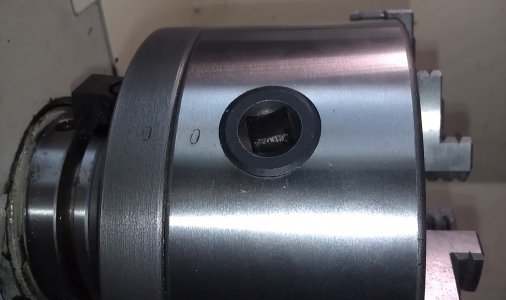- Joined
- Dec 30, 2014
- Messages
- 259
I thought I read someplace that you should always tighten a 3 jaw chuck in the hole marked 0? Is that correct? Can someone shed some more detail on this?
I was talking with a friend and the topic came up and we were standing In front of my lathe so I looked. Sure enough it has a 0 mark.
Also, on the Jacobs chucks, are you supposed to tighten all three or is one good enough?
jim

I was talking with a friend and the topic came up and we were standing In front of my lathe so I looked. Sure enough it has a 0 mark.
Also, on the Jacobs chucks, are you supposed to tighten all three or is one good enough?
jim

